Backlinks are still one of the key ranking factors. However, building hundreds of links doesn’t guarantee higher organic traffic and SERP performance, as it all depends on their quality.
In the article, I explain what makes a link powerful, what kind of links tend to be most powerful, and how to get those links for your website.
What Makes Backlinks Powerful?
There are a few things to look at when deciding if you’re dealing with a powerful backlink.
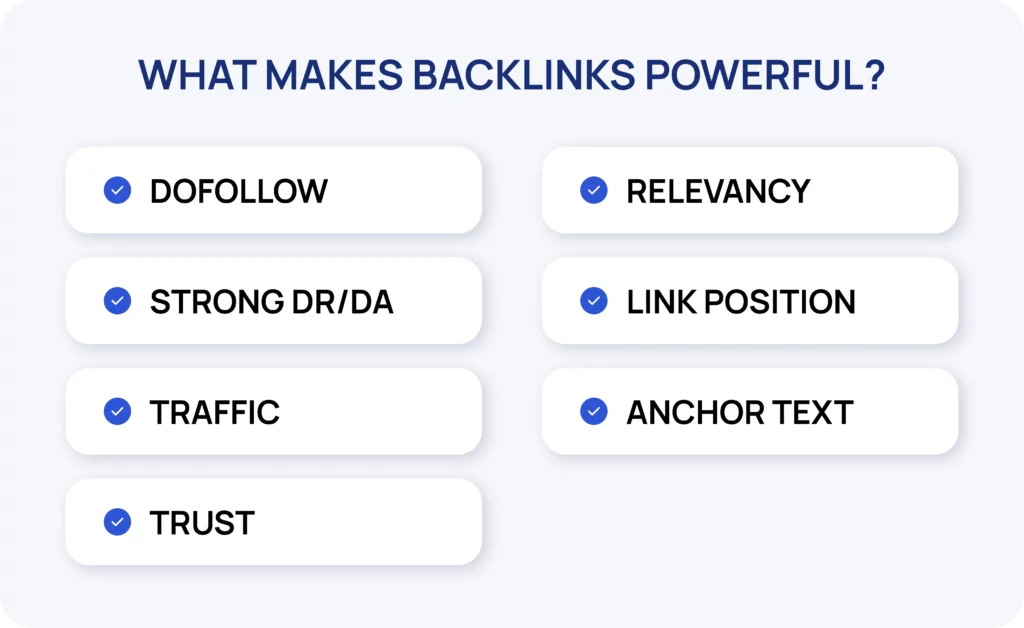
Dofollow
Powerful backlinks usually have ‘dofollow’ tags.
That’s because search engine bots can crawl ‘dofollow’ backlinks and pass the link equity to the destination website. This increases the domain’s authority and influences its ability to rank higher in SERPs.
At least that used to be the case.
Nofollow may not be as useless as they’re often believed to be.
🤔 Did you know that according to our state of link building, nearly half (46.9%) of respondents actively pursue nofollow links?

First, Google changed how it treats nofollow backlinks in 2019: it doesn’t ignore them anymore but treats them as hints instead.

Andrew Holland, the Director of SEO at JBH, goes even further and claims that nofollow backlinks are as good as dofollow ones:
We have boatloads of data internally that show no-follow links work like do-follow links, no matter what Google says.
We have boatloads of data internally that show no-follow links work like do-follow links, no matter what Google says.
An experiment conducted by Christopher Panteli and Kyle Roof also confirms that nofollow links matter more than Google admits:
Our findings clearly suggest that not only do dofollow links have a concrete impact on rankings and can be considered a Google ranking factor, but the quality of nofollow links matters as well.
You read that right: the nofollow tag matters less than the link quality.
Time to dissect what ‘quality’ means then.
Strong DR/DA
For many, backlink quality is determined by strong Domain Authority (DA) or Domain Rating (DR).
The rule of thumb is that the higher the authority of the referring domain, the more link juice it passes, and consequently, the higher impact it has on the performance of authority of the destination site.
Domain rating … has become industry-wide recognized as one of the best indicators for how ‘powerful’ a domain is. It’s a rating out of 100. The higher, the better.
The more powerful the domain, the more powerful the link.
However, there are two caveats here.
First, I’ve recently shown that it’s easy to manipulate a website’s DR without adding value - or improving its performance.
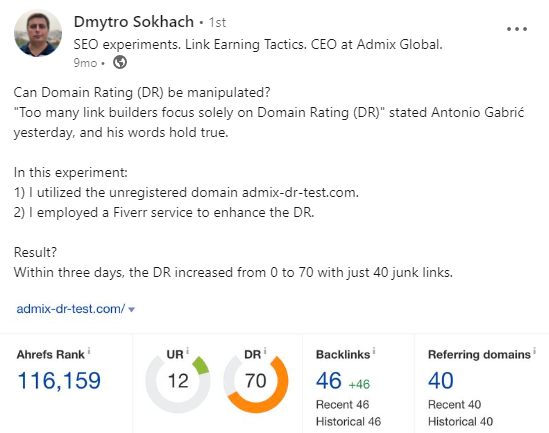
Second, the DR is split equally among all external sites. So if you have 2 backlinks from 2 DR90 sites and one of them links to 100 websites while the other to 1000, it’s the former that influences the rating more.
Traffic
The 2019 Ahrefs study suggests that “the amount of organic traffic to a referring domain has little impact on the value of a link.”
The results are a bit dated but let’s assume this is still the case. Still, traffic to the referring domain is worth considering when deciding how powerful your link is.
Here’s why:
First, backlinks from frequently visited pages can drive traffic to your site:
Links also provide referral traffic. Users will access your site directly from this link. When placed on a high-traffic page such as a comparison site, you’ll get a large amount of traffic to your site – typically ready-to-buy.
It doesn’t stop there.
Antonio Gabric, the Outreach Manager at Hunter.io, believes that traffic volume puts the DA/DR into perspective and allows you to spot red flags in a site’s backlink profile.
If the site has thousands of links and a very high DA/DR but has limited traffic, it’s a warning sign because it’s impossible to build links organically without traffic, and the site may be involved in manipulative practices.

Trust
There’s a lot of talk about links’ trustworthiness as an important vetting criterion, but what exactly does it involve?
Trust has a lot to do with the quality of the domain referring to the site, so it’s DR/DA - or Majestic’s Trust Flow.
Is that it?
Not really. It takes more to trust a website than its backlinks.
Here are a few questions to help you decide if you can trust a website as a source of backlinks:
- Does the website rank for its keyphrases?
- How much traffic does it get?
- Does the website look to inspire confidence?
- Is the website well-established or created only recently?
- Is the content of good quality?
- What’s the inbound-to-outbound link ratio? (If there are way more outbound backlinks, the website may be selling links).
Relevancy
For a link to be powerful, it needs to be relevant.
Relevance is one of the key components of a powerful backlink. If the domain, the linking page, and the content surrounding the backlink are all relevant to your website, this makes for an ideal link. Search engines are ultimately trying to provide users with relevant content which is what makes this such an important factor.
Here’s an example:
Last year, we secured a backlink from Search Engine Land. As this is one of the most reputable and recognized SEO portals, the link is highly relevant.
The referring domain doesn’t need to be in the same business as you to be relevant but there needs to be some common denominator.
Link position
Link position on the page also affects its power.
The most valuable backlinks are placed contextually within the body content of the page, not in the footer, sidebar, or a long list of URLs. This demonstrates that the writer is choosing to link to you because your page is relevant to their content and that they see your information as valuable and offering a level of expertise.
There’s more to it:
When reading a blog post or an article, readers tend to read no more than 20-28% of the text. and the average scroll depth ranges from 25 to 34%. So a backlink at the top of the page is more likely to drive referral traffic.
How much impact on the placement you have depends a bit on your relationship with the author and the kind of content. For example, in a listicle, you may be able to ask them to bring your product or service up.
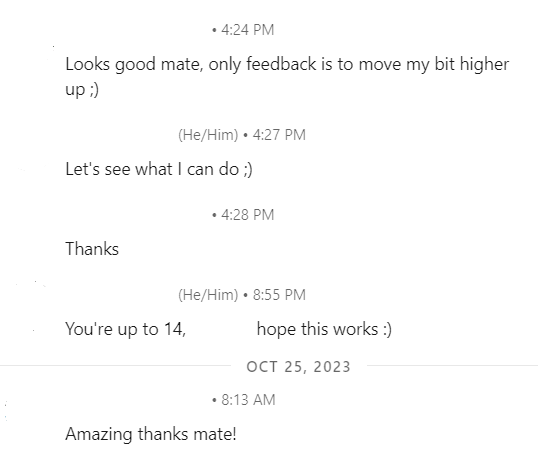
Anchor text
Does the backlink anchor text make backlinks powerful?
Possibly.
The anchor text is like a label that helps the reader decide if they want to open the page or not. Moreover, search engines use the anchor text and the surrounding text to index and rank pages.
However, Darren Kingman believes anchor texts don’t matter as much as they used to:
Historically, anchor text played a more significant role in Google’s understanding of a website and what they should rank it for. But today, they can use a much wider range of signals to understand relevance.
What Type of Backlinks Are The Most Powerful?
Having covered the qualities of powerful backlinks, why don’t we have a link at two main types of links that satisfy many of the criteria: editorial links and digital PR links.
Editorial links
Editorial links are natural backlinks given by writers and editors to add value to their content.
These links are not paid or traded. Instead, you earn them by producing high-quality content.
What makes valuable content that attracts editorial backlinks?
Some common examples include:
- Infographics, both static and animated;
- Research and statistics;
- Ultimate guides and tutorials;
- Free tools and calculators.
Editorial links are considered powerful because they:
- Come from the content creator's decision to include your link as a valuable resource, which is a strong indicator of trust;
- Are often placed within relevant content that shares a similar audience to your own, so can drive highly targeted traffic to your website.;
- Contribute to a natural link profile which indicates that the site is earning links through the quality of its content, rather than through manipulative link-building practices.
The fact that editorial links are free or don’t involve any exchanges doesn’t mean you can’t help their organic acquisition by promoting your content.
You can do it by pitching them to sites that tend to link to similar assets (for example, already linking to an out-of-date resource or linking to lots of infographics), spreading the word in newsletters, or using paid ads.
If you’re not sure how to leverage your resources to secure editorial links, it may be worth having a chat with professionals, like the Editorial.Link team.
Digital PR Links
Digital PR backlinks are links acquired from public relations efforts using tactics like reactive PR and newsjacking, thought leadership, and product PR or creative campaigns.
Darren Kingman believes that PR links are some of the most powerful ones because they come from reputable and high-authority media outlets:
Digital PR links are among the most powerful because as a tactic it specifically targets top-tier and extremely relevant media publications with stories… Therefore, links from those domains pass an exponentially higher amount of equity.
It doesn’t stop at boosting your DR.
Digital PR increases your brand visibility and exposure:
Media websites need the traffic to survive. They have Facebook groups, email lists, and often huge followings.
SEOs getting a DR70 guest post link on a page that no human will ever see is not the same as a DR70 link and mention in a post read by 30,000 people.
It gets even better.
Andrew believes PR links deliver results in less time:
Digital PR links have near-instant impact. I think this is because they get indexed faster, interacted with by real people, and clicked through by real humans. If CTR plays a part in Google search, user interaction, and link CTR probably does too.
How to Build the Most Powerful Backlinks?
Having discussed what kind of links are most powerful - and what kinds you should avoid, let’s now have a look at how to build them.
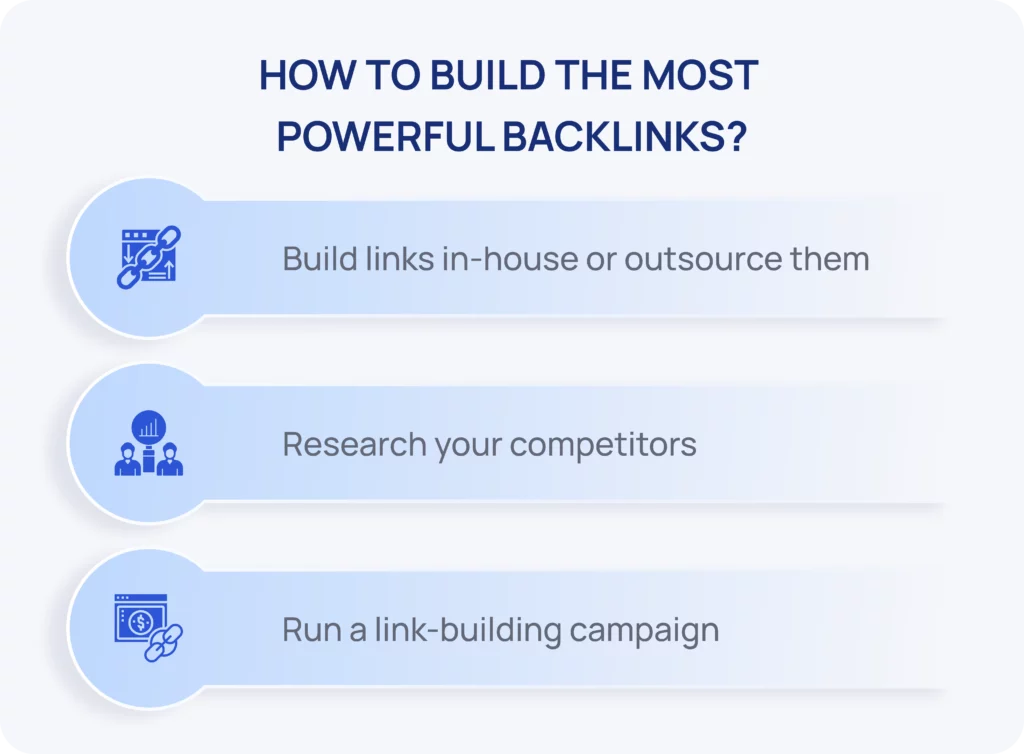
Build links in-house or outsource them?
You have two paths to secure powerful backlinks: you can either build them in-house or outsource them to a third party, like a link-building agency or a freelancer.
How do the two approaches stack against each other?
I asked Jakub Rudnik, the Head of Content & SEO at Softr, who has used both approaches in his career. He admits that outsourcing can be pretty expensive:
Agencies cost a ton of money. People pay $100s or even upwards of $1,000 for a link.
Moreover, the quality of links delivered isn’t always impressive and you have no guarantee that they don’t rot after a few months:
And agencies don’t have your best interests at heart — they want to get you the deliverable links, whether those links are the best links for your site. So you’ll often see low-traffic links or link-farm links in their deliverables, and those do little for you. Also, links are typically only guaranteed for 3-6 months, so if they are removed after that, you’re out of luck.
Not all agencies have such a transactional approach, but you need to be ready to pay top dollar for the services of the premium ones.
Jakub also points out that there are advantages of contracting link-building to 3rd parties, especially if you’re only starting out:
Outsourcing links allows you to focus on other areas. For someone with limited bandwidth (everyone) or little link-building experience, this is a good option. These companies have access to sites and connections you don’t and can save a lot of time and headaches. Link-building can feel like the dark arts to someone new.
Here’s a table comparing the pros and cons of the two approaches:
| In-House Link Building | Outsourcing Link Building |
| High control over strategy, target sites, and content quality. | Less control over the specifics of link-building efforts. |
| Deep understanding of the brand, products, and services, leading to more relevant link placement. | May lack deep brand understanding, potentially leading to less aligned link placement. |
| Potentially more cost-effective in the long term once you build the team. | Can be more cost-effective in the short term but may become expensive over time. |
| Requires significant resources for training, salaries, and tools. | Reduces the immediate need for in-house resources and overheads. |
| Scaling up expertise and processes can take time. | Immediate ability to scale efforts without the need for extensive training or recruitment. |
| Risk of becoming insular, missing out on diverse strategies and ideas. | Access to diverse strategies and fresh ideas from experienced professionals. |
| Expertise and experience build up over time, potentially slower initial progress. | Immediate access to a wealth of experience and a proven track record of success. |
| Access limited to the networks the in-house team can develop over time. | Often have established relationships with publishers and site owners, facilitating link placements. |
Research your competitors
Competitor research is one of the most popular link-building tactics because it allows you to leverage the work done by your rivals.
Specifically, it helps you identify the most effective link-building strategies and prospects. Thanks to that, you can save time and resources you would have to spend if starting from scratch.
In a nutshell, to conduct competitor analysis, you:
- Identify your competitors (for example, using the Organic competitors report in Ahrefs).
- Identify link gaps between you and your competitors (Ahrefs Link Intersect is the tool).
- Analyze the links they’ve built to identify their strategies and referring domains linking to their sites (with Ahrefs Backlinks report and Content Explorer, you can easily find backlinks from HARO, linkable assets, guest posts, interviews, podcasts, redirects, etc).
Here’s an example of how this works:
I’ve run the Backlinks report on the Hubspot page and filtered the results to include ‘crm’ and ‘best crm’ in the referring page title and URL. In this way, I have identified multiple listicles. If your product is a CRM, these could be the pages to target in your campaign.
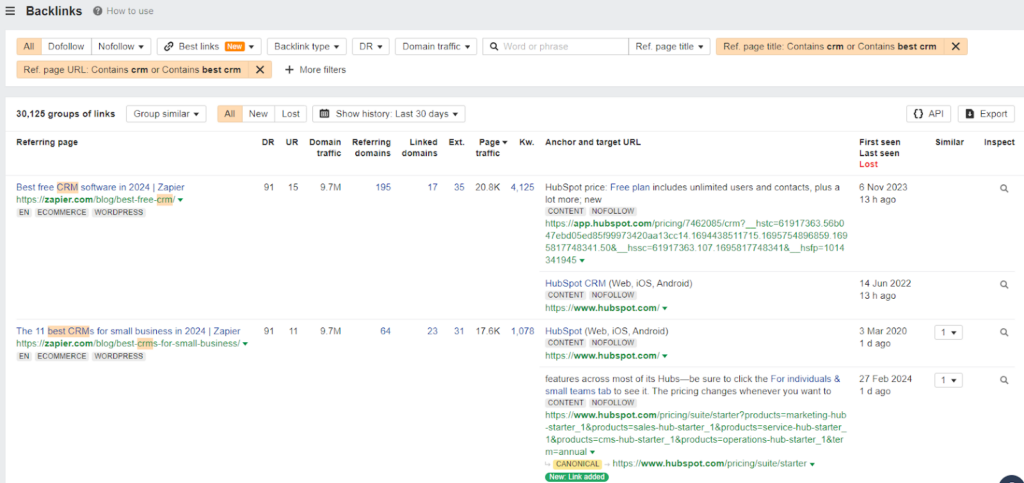
Run a link building campaign
The competitor backlink analysis serves as a good foundation for your link building campaign.
The process normally consists of 5 steps:
- Goal-setting (e.g. increasing organic traffic or boosting sales);
- Researching link-building opportunities;
- Developing linkable assets;
- Partner outreach;
- Progress monitoring (tracking the acquired backlinks as well as their impact on SERP performance and traffic or conversions).
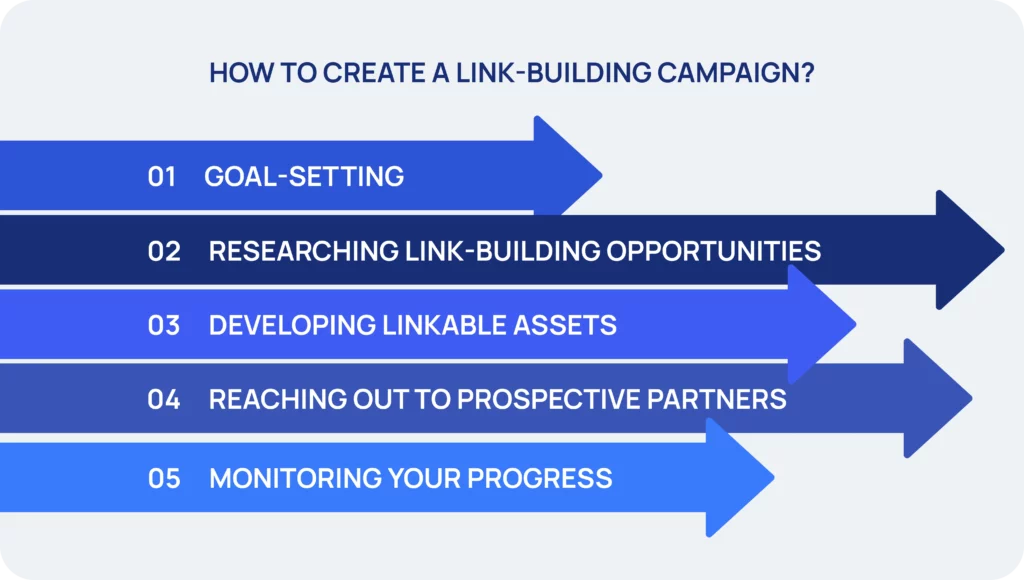
Final words
Defining what makes a powerful link isn’t as straightforward as it may initially seem.
Dofollow backlinks from relevant high DA sites with lots of traffic are better than nofollow links from random low-authority websites without visitors. However, how much each of the variables influences the link value and its impact on your performance is far from conclusive.
Consequently, planning and executing campaigns to build such powerful backlinks requires a fair bit of experience.
While lots of in-house teams have that kind of expertise, many will no doubt benefit from the help of specialist link-building agencies.
If it’s the latter that you want to try, why not get in touch with the Editorial.Link team for a free consultation?






